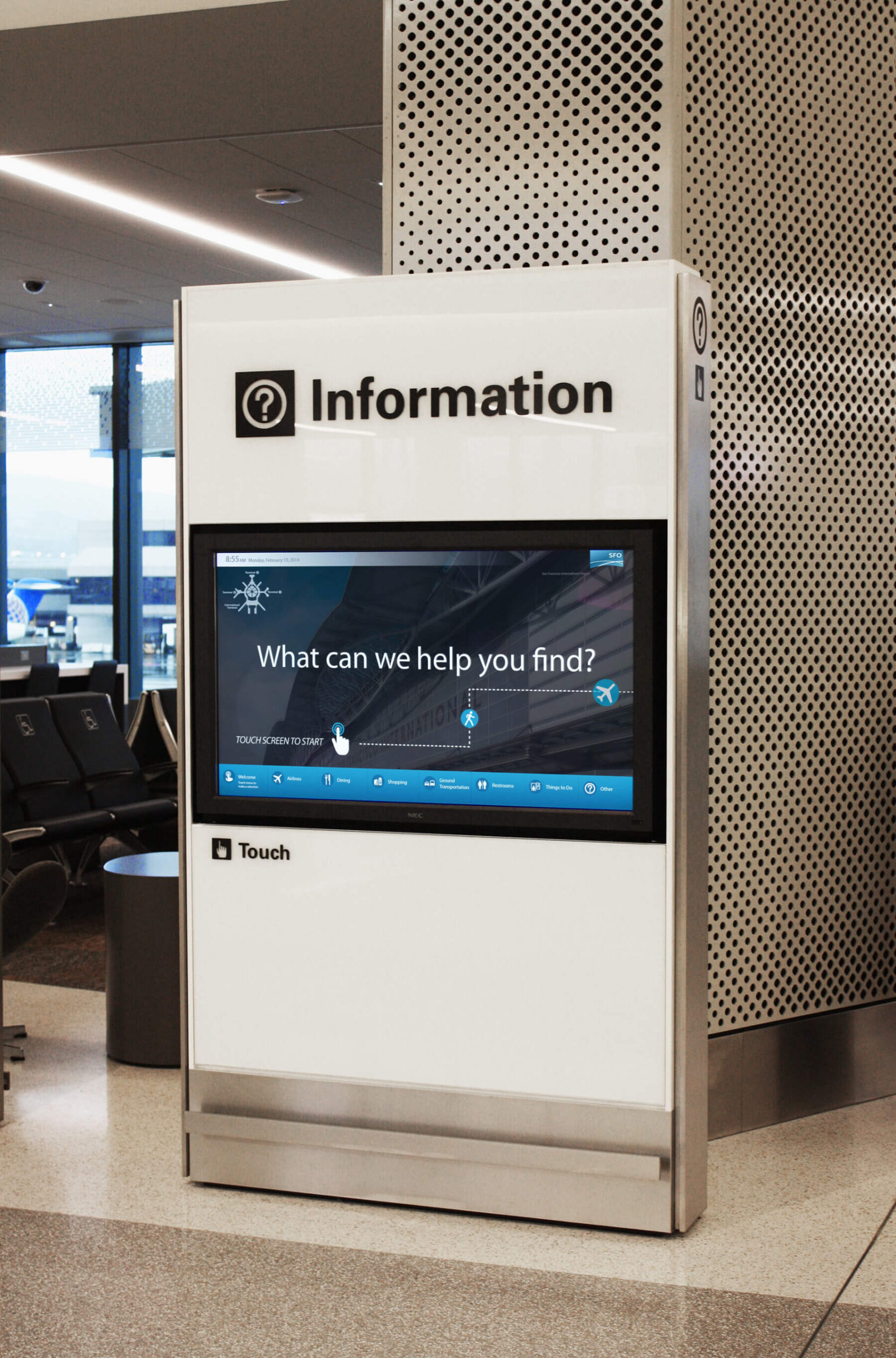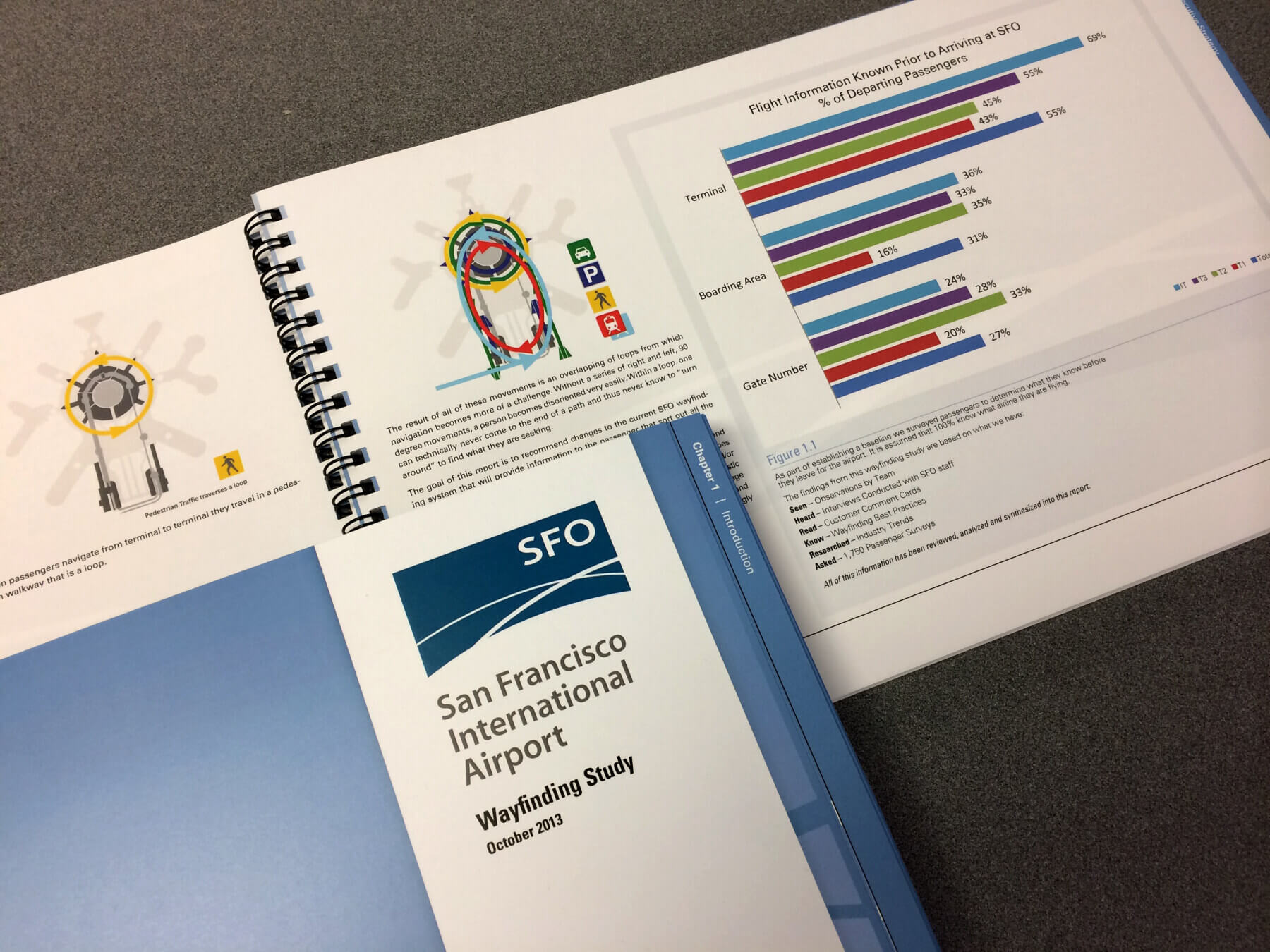SFO is a large airport with complex architectural spaces and numerous visual stimuli competing for customers’ attention. These attributes, combined with the airport’s non-intuitive circulation pathways and counter-intuitive service locations, could make navigation difficult for unfamiliar passengers. Gresham Smith worked with the airport to identify and evaluate existing passenger signage programs and develop a holistic strategy for improvement throughout the airport terminals, ground transportation, curbs and center islands, and AirTrain system.

We found that SFO’s art, advertising, concessions, marketing and wayfinding programs were all controlled by different departments and often competed for the same space with adverse results. Drawing on the three overarching wayfinding principles of continuity, connectivity and consistency, our team recommended adopting a wayfinding strategy that flows from the airport’s design into a natural hierarchy of visual elements that affect the passenger experience, including: verbal and written communication via static and digital signage and non-sign-related wayfinding tools such as landmarks, architecture, lighting, print/web and digital tools. Recommendations were reviewed from both a cost and passenger/airport benefit perspective to determine the appropriate allocation of resources.
